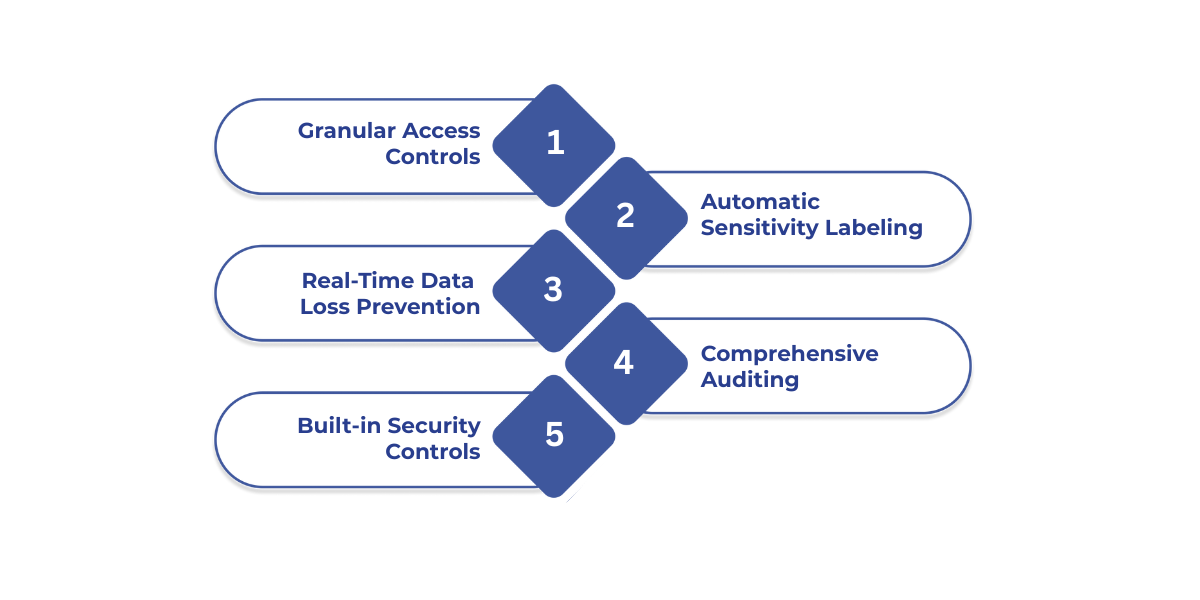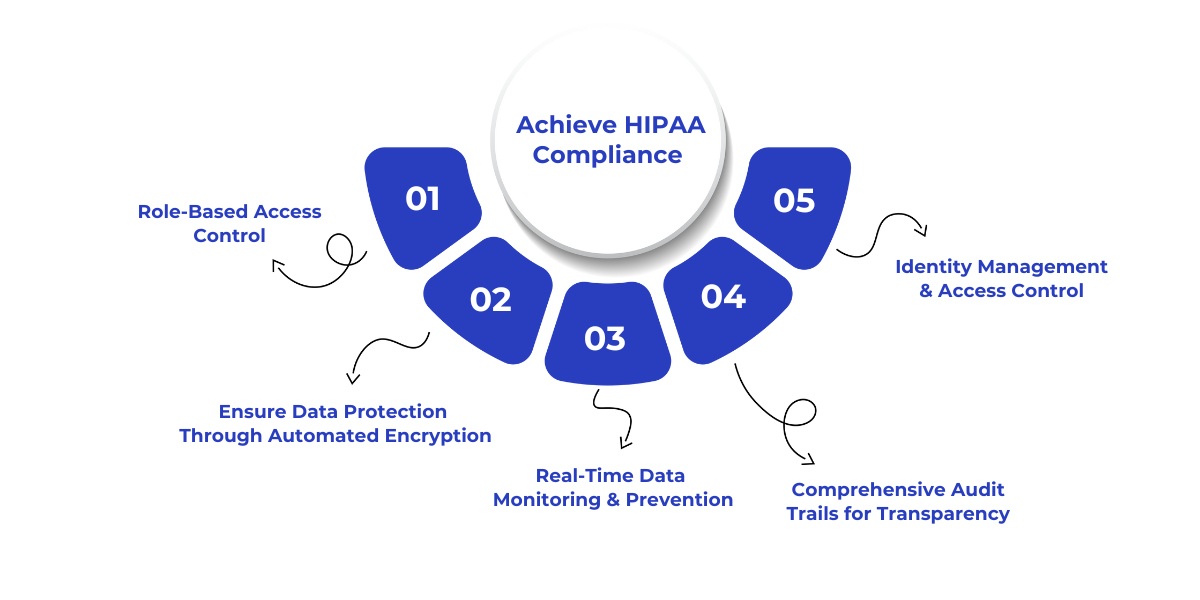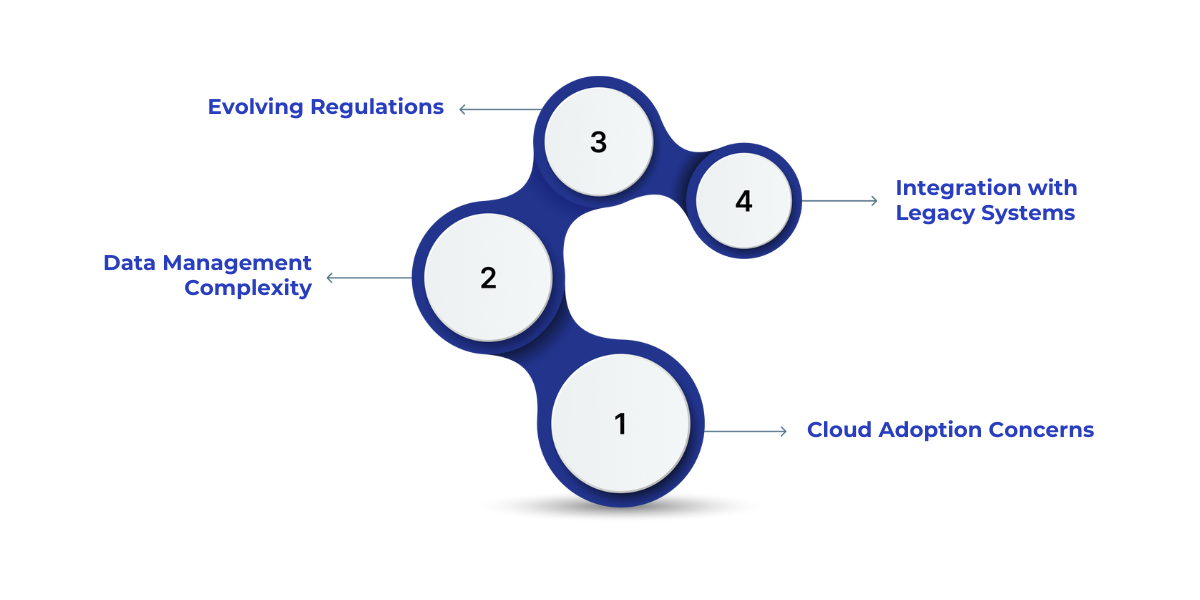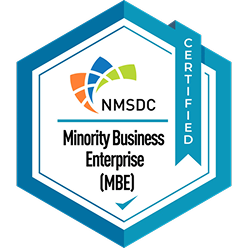

As more healthcare data moves into the digital platform, how confident are you that it’s being handled securely and in line with the rules? HIPAA compliance isn’t just important, it’s mandatory for protecting sensitive health information. This is where Microsoft Fabric steps in. With its robust capabilities in cloud computing, artificial intelligence, and data analytics, Microsoft Fabric serves as a powerful tool for meeting HIPAA compliance requirements.
In this blog, we’ll explore how Microsoft Fabric ensures HIPAA compliance, supports governance frameworks, and what steps you can take to effectively protect healthcare data. By the end, you’ll have a clear understanding of how to use Microsoft Fabric to safeguard health information while adhering to HIPAA requirements.
Key aspects of HIPAA compliance include:

Maintaining HIPAA compliance protects patients’ sensitive information and helps organizations avoid significant fines and penalties for non-compliance.
Microsoft Fabric is a comprehensive platform that helps businesses, including healthcare organizations, manage and analyze large volumes of sensitive data. Think of it as an all-in-one tool that simplifies how you gather, process, and make sense of your healthcare data in real-time.
It connects different data management tools into a single system, so you don’t have to worry about using separate apps or software. All your data, from patient records to clinical data, is stored in one central place called OneLake, and it comes with built-in AI features that automatically analyze the data.
With Microsoft Fabric, healthcare organizations can quickly turn complex health data into valuable insights, while ensuring compliance with HIPAA standards. It’s like having a smart assistant to keep your data secure and compliant, all in one place!
Microsoft Fabric is designed to meet data privacy and security requirements across various industries, including but not limited to healthcare. It helps them meet the strict privacy and security standards required for handling sensitive health data.
It’s fully covered under Microsoft’s HIPAA Business Associate Agreement (BAA) and HITRUST CSF certified, which means it meets all the necessary compliance standards for handling Protected Health Information (PHI).
Here are some key features of Microsoft Fabric that help healthcare organizations stay HIPAA-compliant:

Microsoft Fabric lets you set detailed permissions, ensuring that only authorized users are able to access all the sensitive health information. This helps protect patient data and ensures that only the right people have the right level of access.
With Microsoft Fabric’s integration with Microsoft Purview, your data gets automatically labeled for sensitivity, ensuring it stays encrypted and protected throughout its lifecycle. This minimizes accidental data exposure risk.
Microsoft Fabric’s DLP policies prevent unauthorized sharing of PHI. It actively monitors data and blocks any attempts to share sensitive information improperly, helping reduce the chances of human error leading to a compliance breach.
Every action taken within Microsoft Fabric is logged, creating an audit trail. This lets administrators track user activity and quickly investigate any issues, helping to ensure accountability and stay on top of compliance.
Microsoft Fabric automatically applies security measures like encryption and multi-factor authentication (MFA) to protect PHI, both when it’s stored and when it’s being transferred. These built-in features simplify the process of keeping data safe.
With these compliance features, Microsoft Fabric makes it easy for healthcare organizations to securely manage sensitive data while staying fully compliant with HIPAA regulations. It allows you to focus on what matters most, patient care, without the worry of non-compliance.
Also Read: Migrating Legacy Systems to Microsoft Fabric: Best Practices and Tips
.png)
Data governance is critical in ensuring that sensitive healthcare data is managed appropriately. Microsoft Fabric offers a suite of governance tools that help organizations control how data is stored, accessed, and analyzed. Governance tools in Microsoft Fabric include:
This feature ensures that only individuals with the appropriate authority can access or modify PHI, reducing the risk of unauthorized access.
Helps categorize data according to sensitivity, ensuring that the most sensitive data receives the highest level of protection.
Provides real-time visibility into how data is being accessed and used, making it easier to identify potential risks to compliance.
By applying these governance tools, healthcare organizations can ensure they meet HIPAA’s security and privacy requirements while maintaining control over their data.

Achieving HIPAA compliance goes beyond just securing data; it’s about continuous monitoring, real-time protection, and clear auditing. Microsoft Fabric provides the tools healthcare organizations need to maintain compliance effortlessly. Here’s how Microsoft Fabric helps meet HIPAA requirements:
Microsoft Fabric uses Role-Based Access Control (RBAC) to make sure only authorized individuals can access or modify Protected Health Information (PHI). It also offers row-level and column-level security, so healthcare organizations can control who sees and edits specific sensitive data like patient records.
Fabric automatically applies sensitivity labels and persistent encryption through Microsoft Purview, securing PHI throughout its lifecycle. This ensures that data stays protected, even when shared or exported, without the need for manual oversight.
Fabric’s Data Loss Prevention (DLP) policies monitor data as it’s uploaded or shared. If PHI is detected in an unauthorized action, Fabric either blocks the operation or notifies administrators to prevent any data exposure.
Fabric integrates with Microsoft Purview to track every action related to PHI. This includes access, modifications, and exports, creating clear audit logs that help maintain transparency and simplify compliance reporting.
With Microsoft Entra ID, Microsoft Fabric strengthens access control through multi-factor authentication (MFA) and conditional access policies. This ensures that only verified users can access sensitive data, adding another layer of security and helping meet HIPAA access requirements.
By using these tools, Microsoft Fabric ensures that healthcare organizations can manage and protect PHI securely while staying fully compliant with HIPAA’s privacy and security requirements.
To fully take advantage of Microsoft Fabric's features and ensure HIPAA compliance, healthcare organizations should follow these best practices:
With these practices, healthcare organizations can stay on top of HIPAA compliance while securely managing and protecting sensitive health data.

While Microsoft Fabric provides robust tools to support HIPAA compliance, there are still some challenges healthcare organizations may face in fully leveraging the platform. It's important to understand these challenges and plan accordingly.
Moving sensitive healthcare data to the cloud can be daunting for some organizations, especially when it comes to maintaining control over PHI. While Microsoft Fabric offers strong security, it’s important to check that your organization is comfortable with cloud storage and meets HIPAA’s requirements.
As healthcare data increases, managing and organizing it becomes harder. Microsoft Fabric helps centralize data, but organizations still need solid management strategies to stay compliant with HIPAA.
HIPAA regulations can change over time, so it’s important to stay updated. Microsoft Fabric lays a strong foundation, but organizations need to regularly review their processes to keep up with the latest rules and standards.
Many healthcare organizations still use older systems. Integrating these with Microsoft Fabric can be tricky, especially when ensuring everything stays compliant. Careful planning is needed to make sure security and compliance are maintained across all platforms.
By understanding these challenges and considering them upfront, healthcare organizations can better navigate the path to full HIPAA compliance with Microsoft Fabric, ensuring that they protect sensitive patient information and meet regulatory requirements effectively.
Compliance with HIPAA is an important requirement for healthcare organizations, and Microsoft Fabric provides the tools and features necessary to meet these standards. With its powerful security, governance, and compliance features, Microsoft Fabric enables organizations to manage healthcare data securely while adhering to HIPAA regulations.
At WaferWire, we specialize in helping healthcare organizations integrate and optimize Microsoft Fabric to meet HIPAA standards. As a trusted Microsoft Partner, we offer tailored solutions to optimize Microsoft Fabric for your healthcare data management needs.
Contact us today so we can help you simplify compliance, improve data security, and increase operational efficiency.
1. How does Microsoft Fabric ensure HIPAA compliance for healthcare data?
Microsoft Fabric uses encryption, audit logs, and role-based access control to ensure the security and privacy of healthcare data, helping organizations meet HIPAA standards.
2. What is the role of audit logs in HIPAA compliance within Microsoft Fabric?
Audit logs in Microsoft Fabric track data access, ensuring that all actions are recorded and can be reviewed for compliance purposes.
3. Can small healthcare organizations use Microsoft Fabric for HIPAA-compliant data management?
Yes, Microsoft Fabric is designed to scale and can be used by organizations of any size to manage healthcare data securely and in compliance with HIPAA.
4. What are the penalties for non-compliance with HIPAA in cloud environments?
Penalties for non-compliance with HIPAA can range from fines to legal action, depending on the severity of the violation. Non-compliance can also harm a business’s reputation.
5. How often should healthcare organizations review their HIPAA compliance in Microsoft Fabric?
Healthcare organizations should review their compliance regularly, particularly when there are changes to the data architecture, regulatory updates, or when new employees have access to sensitive data.

